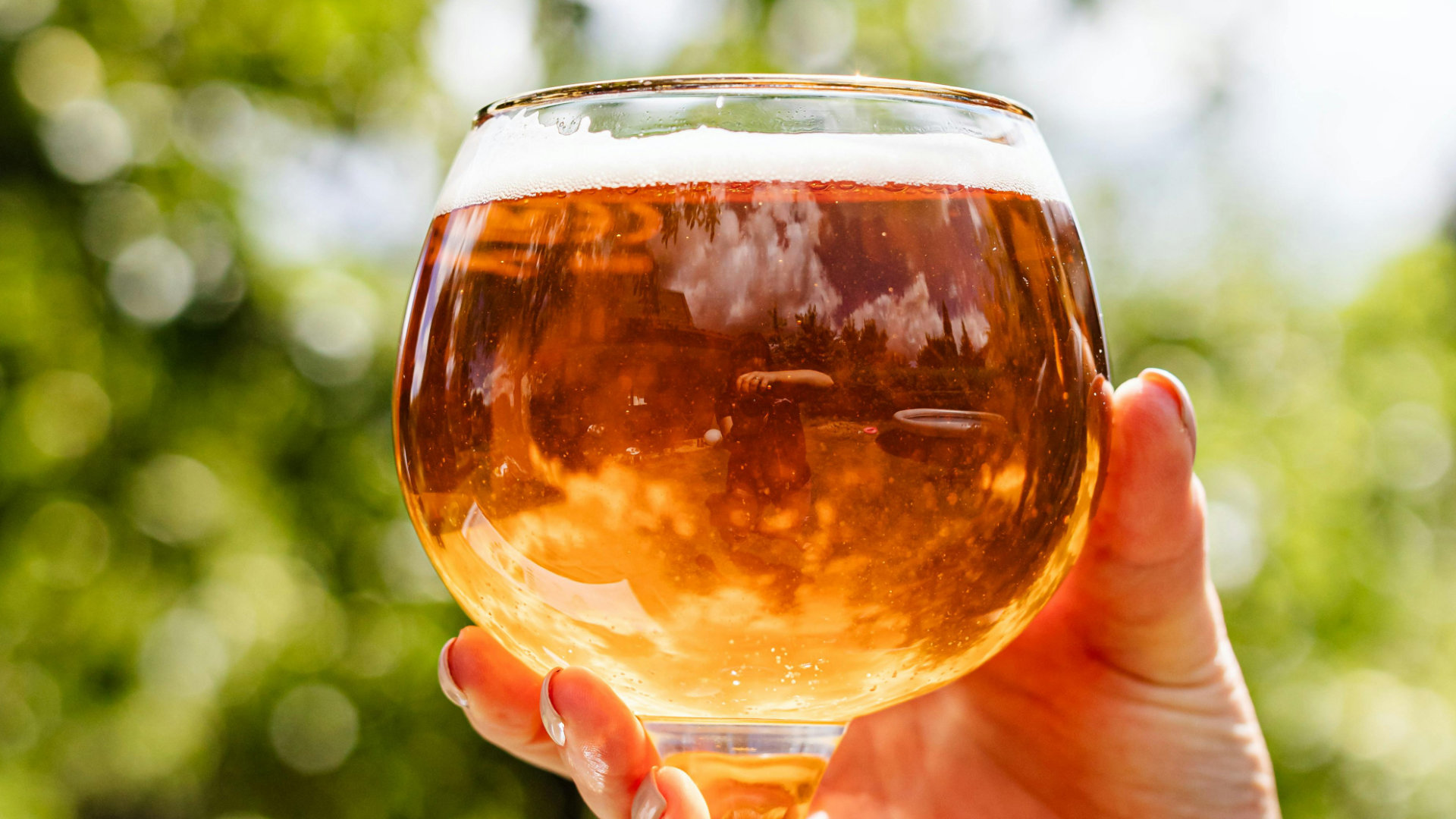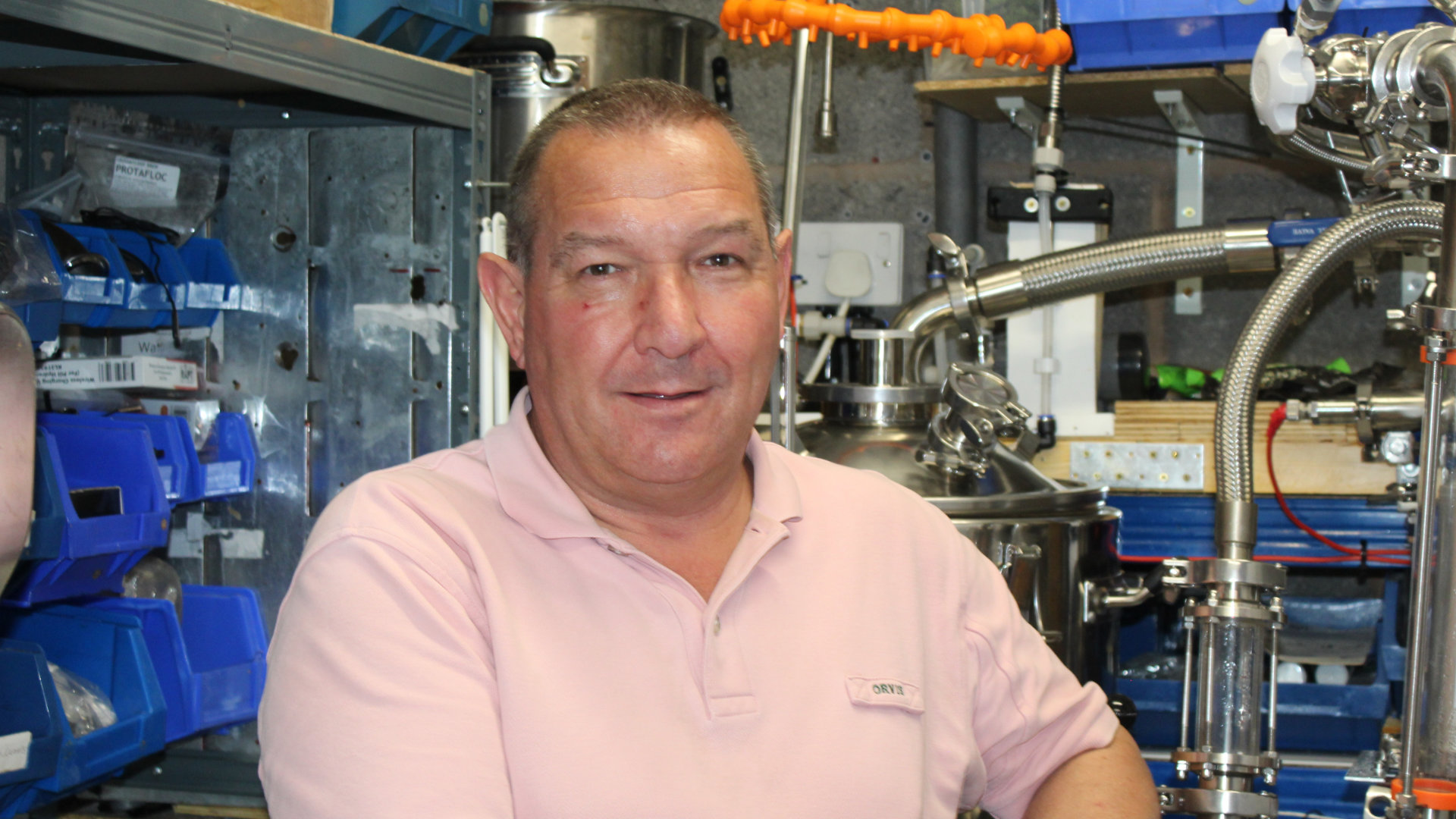Adventurous homebrewer & YouTuber Nikita Vorontsov sits down for a virtual pint with Yohanna Best. Pour yourself a cold one and discover the story behind his mushroom beer, brewing with fruit and creating sours.
YB: How long have you been homebrewing and how did you start?
NV: I first started homebrewing somewhere around 2019 with a cheap extract kit. The kind where you just pour extract into a bucket, top up with hot water to dissolve, then add enough water to hit around 20 litres of beer. This tasted fine, although speaking from experience now it was probably hideously oxidised, but I didn’t care because it was mine! Then around July 2020 during the COVID Lockdown I decided that I’d try to restart homebrewing, but I wanted to do it properly this time and bought myself a Brewzilla V3. Great bit of kit that really stepped up my beers. I still remember the very first proper all grain brew I made (a clone of the Anchor Steam Beer) and just how different the quality was, so much nuanced flavour, after that I just got hooked!
YB: We’re really enjoying your brewing experiments on YouTube. Tell us about your Dungeons & Dragons series.
NV: Thank you very much. The series came about out of a desire to try brewing new drinks, but without just selecting a random thing to brew. After watching Martin Keen’s Homebrew Challenge videos I figured maybe it’s a great way to force myself to try weird new styles by attempting to brew a series of beers of my own. The only trouble I had was what to brew. Being a lover of Dungeons and Dragons I figured that might be a great way to bridge the gap and get myself to try new things. I’ve recently completed brewing my own take on every official Dungeons & Dragons beer there is, and this has really taken me to some weird inspirational places, such as brewing the Sahti Spruce Beers, as well as brewing with mushrooms.
YB: Yes, the mushroom beer! You weren’t a fan but Alex liked it - is that the strangest thing you’ve brewed?
NV: It really was a strange brew. I hoped that the mushrooms might provide a wonderful umami flavour to counteract the caramel-sweetness of the Brown Ale, but in fact it almost did the opposite where the vast quantity of Portobello mushrooms seemed to actually provide a huge caramel-sweet kick…and you could really notice it as long as you managed to separate yourself cognitively from the knowledge that it’s mushrooms. So definitely not one for me. Alex is a big fan of strange tasting food and drinks, however, so I’m almost not surprised she enjoyed it!Â
“PHILLY SOUR YEAST: ABSOLUTE GAME CHANGER IN MY VIEW.â€
YB: You’ve been brewing with loads of different types of fruit. Which do you think is the best form of fruit to brew with: frozen, fresh, puree, dried…?
NV: Personally puree is the way to go. Specifically cocktail puree if you can get it, as they do the whole business of pasteurising for you so you can just add it straight in. Yes, it is definitely more costly, but the whole practice of needing to mash, puree, then sanitise, then freeze, then add in fruit is just far too long a process for my liking. Just doing a couple of freeze-thaw cycles generally doesn’t kill bacteria, so if you’re already making a costly brew, you don’t really want to leave things to chance.
YB: What do we need to bear in mind when brewing with fruit? How does fruit impact things like fermentation, pH and SG? Any tips for a homebrewer?
NV: Fruit contains a huge amount of fructose, obviously plus/minus a certain percentage given the fruit, but generally it’ll have some fructose. This will usually be almost wholly fermented by the yeast in the beer you add it to. The issue I had with this, is this ends up diluting the end result by a fair bit. One of the first fruit beers I made was a Strawberry Beer that would end up incredibly dry, around the 1.004 mark, just by virtue of adding a vast quantity of liquid that ends up with no residual sugar. So if you want to leave an element of sweetness you want to either use some Potassium Sorbate and Potassium Metabisulphite to completely kill off the yeast and inhibit it from fermenting any more sugars, or just add some maltodextrin or lactose (if you have to and aren’t catering for vegans or those who are lactose intolerant) to give a little bit of body. I’d also highly advise to not overthink it. At the end of the day it’s literally just bunging some fruit in and leaving it for 2 weeks to let it absorb the flavours. Brewing with fruit does not have to be difficult at all.
YB: Looks like your Sours have turned out well! That cherry one looked really good. What are your tips for brewing a Sour?Â
NV: Most of my experimentation with sours has primarily been with Philly Sour yeast. I’ve seen many people brewing using Kettle Souring, even bucket souring where you syphon from below the pellicle line, but for me that all requires extra equipment and potential space that I don’t have. Top tips for brewing a Sour in my mind are not being afraid of going too sour, going all in with some fruit, and please, please, please don’t use lactose. I find that it’s currently a huge trend right now in the Sours world, and it’s even threatening to spill into IPA’s where lactose is used to provide body and to cushion the blow of how sour the beer is, leaving a very middle of the road taste. It also makes it impossible to drink if you’re lactose intolerant. The best Sour beers I’ve made have been a very simple process of 50/50 wheat and pilsner malt, a very mild neutral amount of hops just to inhibit wild bacterial growth, one or two great fruits which you don’t skimp on (I’m talking 250g/L of fruit), and Philly Sour yeast.
YB: Nice! Have you had good results with Philly Sour yeast? Any tips?
NV: Absolute game changer in my view. It negates the need for special Sour-only equipment for fear of contamination, and also completely gets rid of that anxiety that something may get cross-contaminated. It’s a fantastic strain that produces lactic acid as an initial step of fermentation before it undergoes the actual fermentation process itself. To get a sourer beer, use more than 1 sachet, and add some dextrose or simple sugars to allow the yeast to capitalise on lactic acid production. The other key tip is to give it some time at the beginning, the Cherry Sour I made took around 5-6 days to begin actually fermenting, and that was most certainly a scary moment, where I thought that maybe something had gone wrong. In fact, it was just producing a humongous amount of lactic acid, and I just needed to Relax, Don’t Worry, And Have A Home Brew.
YB: How are you enjoying your Brew Tank?
NV: Very much so! It is an absolutely phenomenal bit of kit, really well built, incredibly sturdy and I love the multiple triclamp fittings. Makes cleaning a breeze, as well as assembling/disassembling. I’m also a bit in awe at how well insulated it is with the dual walled insulation. I can have my mash sitting without running recirculation, and it keeps temperature incredibly well without needing additional heating. I’m very excited to see how your Unitanks come out also, as I’ve been admiring the ones made by SS Brewtech but sadly they’re just too unaffordable for myself. So, very excited for the future of the Brew Tanks, Brew fermenters and whatever else you come up with! Absolute genius, and if anyone doesn’t have one, then why not!
YB: What can we look forward to on your Youtube channel this autumn/winter?
NV: Next up I’ll be hoping to delve further into various fantasy series. With the completion of the D&D series I’ll try venturing into Lord of the Rings to create some inspired beers, as well as other various fantasy series such as the Cosmere Universe (any Brandon Sanderson fans out there?) and anything else that I can come up with, or even that gets recommended to me. So feel free to submit any ideas!











